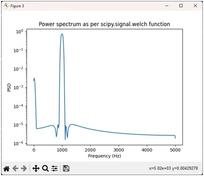10 interview questions and answers on Digital Signal Processing (DSP)
Advertisement
DSP stands for Digital Signal Processing, a branch of engineering and mathematics concerned with manipulating and analyzing digital signals. Digital signals are representations of real-world analog signals in a discrete, digital form. DSP uses algorithms and mathematical techniques to process and modify these signals for various applications in telecommunications, audio processing, image processing, and more.
This questionnaire aims to help you succeed in job interviews for DSP engineer positions. Here are some Digital Signal Processing questions and answers:
Question 1: What is Digital Signal Processing (DSP)?
Answer 1: DSP is a technique for processing, analyzing, and manipulating digital signals to extract useful information or enhance their quality. It involves using mathematical algorithms to perform operations like filtering, convolution, and Fourier analysis on digital signals.
Question 2: Differentiate between analog and digital signals.
Answer 2: Analog signals are continuous and vary smoothly over time, while digital signals are discrete and represented by a series of discrete values, typically binary (0s and 1s).
Question 3: What is the Nyquist-Shannon sampling theorem, and why is it important in DSP?
Answer 3: The Nyquist-Shannon sampling theorem states that to accurately reconstruct a continuous signal from its samples, the sampling rate must be at least twice the highest frequency component of the signal. It’s crucial in DSP because violating this theorem can lead to aliasing and loss of information during digitization.
Question 4: Explain the concept of convolution in DSP.
Answer 4: Convolution is a mathematical operation in DSP used for filtering and signal processing. It combines two signals to produce a third signal, representing the integral of the pointwise multiplication of the input signals. Convolution is used in operations like filtering and linear system analysis.
Question 5: What is the Fast Fourier Transform (FFT), and why is it important in DSP?
Answer 5: FFT is an efficient algorithm for calculating the Discrete Fourier Transform (DFT) of a signal. It’s crucial in DSP because it allows us to analyze the frequency components of a signal quickly and is used in applications such as spectral analysis and filtering.
Question 6: What is the difference between FIR and IIR filters?
Answer 6: FIR (Finite Impulse Response) filters have a finite impulse response and do not use feedback, making them stable and linear phase. IIR (Infinite Impulse Response) filters have infinite impulse responses and use feedback, making them more efficient but potentially less stable and not linear phase.
Question 7: Explain the concept of quantization in DSP.
Answer 7: Quantization is the process of mapping continuous amplitude values of a signal to discrete values. It’s essential in digital systems because analog signals are continuous, and computers can only work with discrete values.
Question 8: What is the significance of the Z-transform in DSP?
Answer 8: The Z-transform is a mathematical tool used to analyze discrete-time systems in the frequency domain. It helps in the analysis of difference equations and the design of digital filters.
Question 9: What is the difference between time-domain and frequency-domain analysis in DSP?
Answer 9: Time-domain analysis deals with signals in the time (or spatial) domain, focusing on their behavior over time. Frequency-domain analysis, on the other hand, examines the frequency components of a signal and how they contribute to its overall characteristics.
Question 10: Can you explain the concept of digital signal processing hardware and its applications?
Answer 10: DSP hardware refers to specialized integrated circuits or processors designed to perform high-speed signal processing tasks efficiently. They are used in various applications like audio and speech processing, image processing, communication systems (modulation/demodulation), and control systems to process and manipulate digital signals in real-time.
Advertisement
 RF
RF


